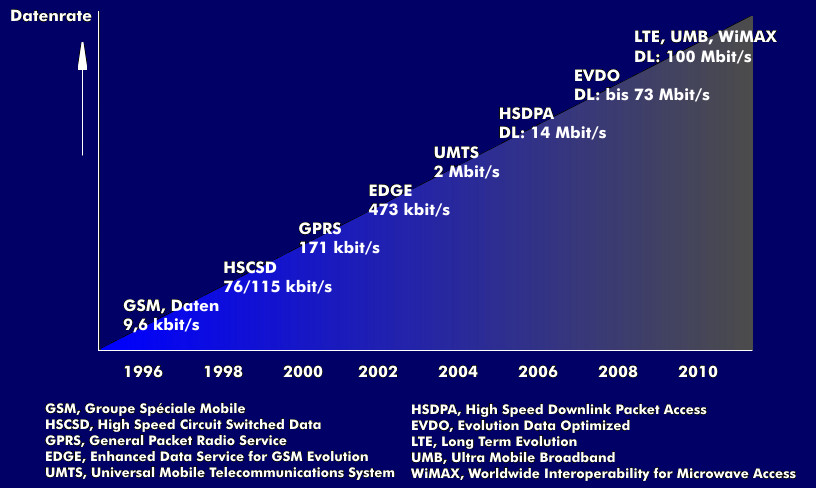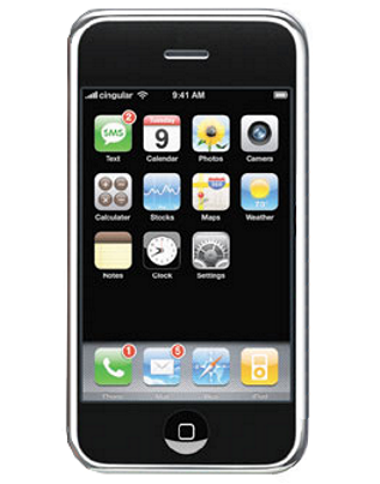mobile broadband
Mobile broadband is a broadband technology that can be associated as mobile Internet. Users can use the high transmission rates for broadband Internet applications such as mobile Internet TV or Internet radio from any location. A wide variety of technologies have been developed for mobile broadband, which have also been adopted by the market.
The development of broadband mobile communications technology
The actual development of broadband mobile technologies began in the late 1990s, when the first 3rd generation networks were installed with UMTS. At the same time, GSM networks were upgraded to higher data rates with High Speed Circuit Switched Data( HSCSD) and General Packet Radio Service( GPRS) and later with EDGE. However, these were not sufficient for moving image transmissions and only to a limited extent for surfing the Internet.
It was not until UMTS that data rates of 2 Mbit/s could be realized. With High Speed Downlink Packet Access( HSDPA) and High Speed Uplink Packet Access( HSUPA), which are based on UMTS technology, and later with Long Term Evolution( LTE), 3rd, 5th and 4th generation technologies, data rates could be increased to well over 10 Mbit/s up to 100 Mbit/s. Other broadband mobile communications technologies such as Ultra Wideband( UWB), Ultra Mobile Broadband( UMB) and WiMAX or Mobile-WiMAX, as well as some technologies with a national character such as WiBro, increased the diversity for mobile broadband with data rates of 100 Mbit/s and above. With the mobile technologies and the 4th and especially the 5th generation, extremely high data rates of 1 Gbit/s, multimedia streams and live streaming with high resolutions, interactive video, Internet telephony and Internet television( IPTV) can be realized.
The overall use of mobile broadband was accelerated by the development of smartphones and tablets. Data volumes increased rapidly due to the development of smartphones with smartphone browsers, portable media players and many other data-intensive functions. The trend directly related to the development of end devices clearly shows that where higher data rates are available, they are also used for high-speed data traffic.
In addition to the technologies mentioned, the 802.16e-2005 and 802.16m working groups of the IEEE are developing mobile high-speed technologies, the latter with transmission rates of up to 1 Gbit/s for gigabit transmissions.


